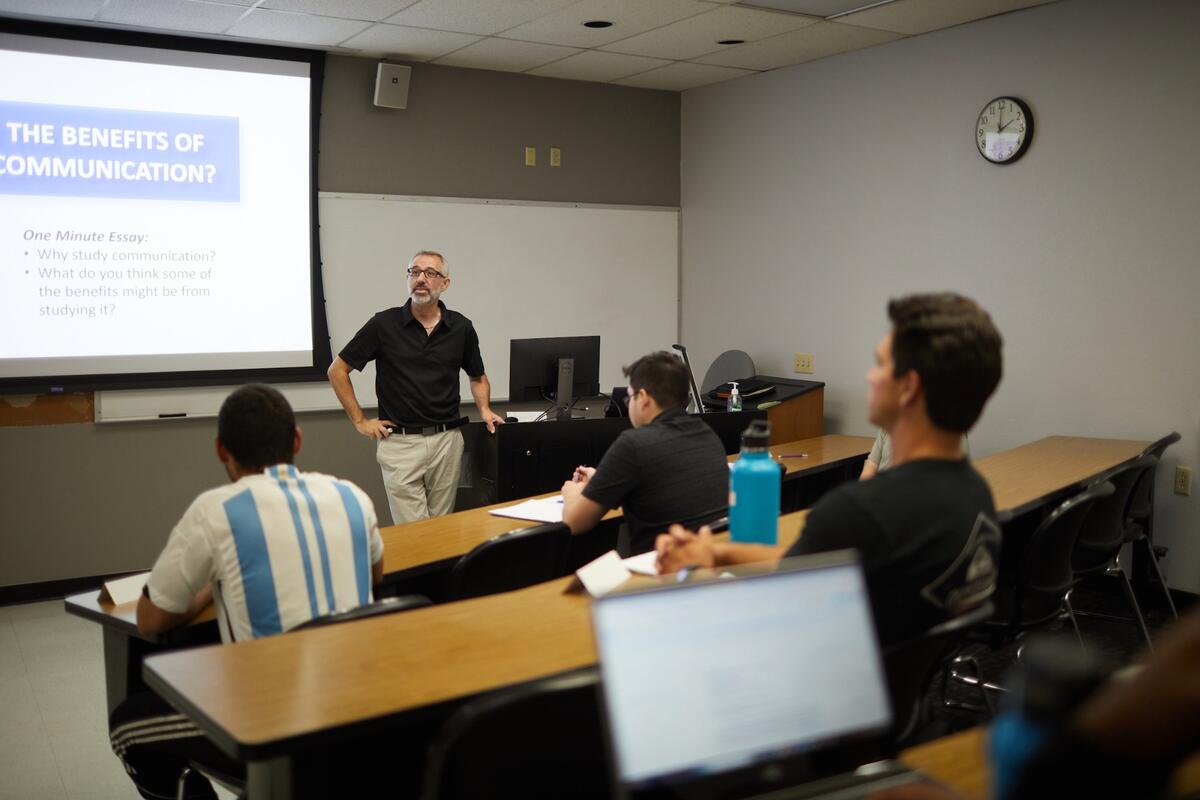It seems like a simple concept: if only we’d communicate better, we’d have a less fragmented society.
Yet, as politics become more polarizing, misinformation spreads, and social media gives way to arguing instead of constructive dialogue, getting to the point of mutual understanding is increasingly challenging.
A class in communication studies is giving students the tools to understand and recognize why communication breakdowns occur.
The Course: Human Communication Theory
One of the course sections of Human Communication Theory, or COM 400, is taught by Jeffrey Child, a professor and chair of the UNLV Department of Communication Studies. He joined the Greenspun College of Urban Affairs last fall.
Turns out, one of the barriers to successfully communicating occurs because individuals rarely do the work internally to address their own biases, psychological motivations, and cultural competencies.
This course addresses that gap by having students reflect upon their own lived experiences. Students review 11 communication theories and study how the theories can apply to their professional and personal relationships.
“These theories aren’t going to apply to every situation they are in. But if the students learn how to critically think about what frameworks provide, and the situations they are in, they can get a lot of guidance to improve their relationships, to share their voice more, and to understand how people come to be the way they are and what to say to them. That’s the goal,” Child said. “There’s nothing more useful than a practical theory to understand people and how we interact with people.”
The course can help students prepare for careers in psychology, law, counseling, and public policy, for example. Child explained the course structure and its relevance.
What will students be surprised to learn?
If they take this class that much of communication theory can help you improve your relationships and ways of interacting with and understanding people across domains of your life. The course will provide opportunities to unpack real life situations and scenarios through the lens of communication theory and research.
How is this class relevant to today’s current events?
The content provides perspective taking, the ability to understand where people may be at, and how you might be able to connect more fully with them. People will always be a part of your life, and knowing why people say and do what they do will enable students to proactively take control and create the kinds of lasting impressions they desire through how they interact with others.
What is your goal in teaching this class?
My goal in the class is to get a ton of different mental models in students’ heads as they navigate life so that they can be more purposive in how they interact with others and more mindful and sensitive about how others interact with them. When they are in a situation of how to reach a person or accomplish goals, they can come back to this class.
How does this help students as they prepare for a career?
It helps people understand how others think, how factors like diversity and our identity play a role in the ideas that people bring and how we can get better analysis of situations by making people feel comfortable to share the way they see things and not be afraid of different ideas and perspectives.
Quick facts about the class, COM 400: Human Communication Theory:
- It is open to all majors at UNLV.
- It fulfills the theory class requirement for undergraduate communication studies majors.
- It’s available asynchronously and in person.



